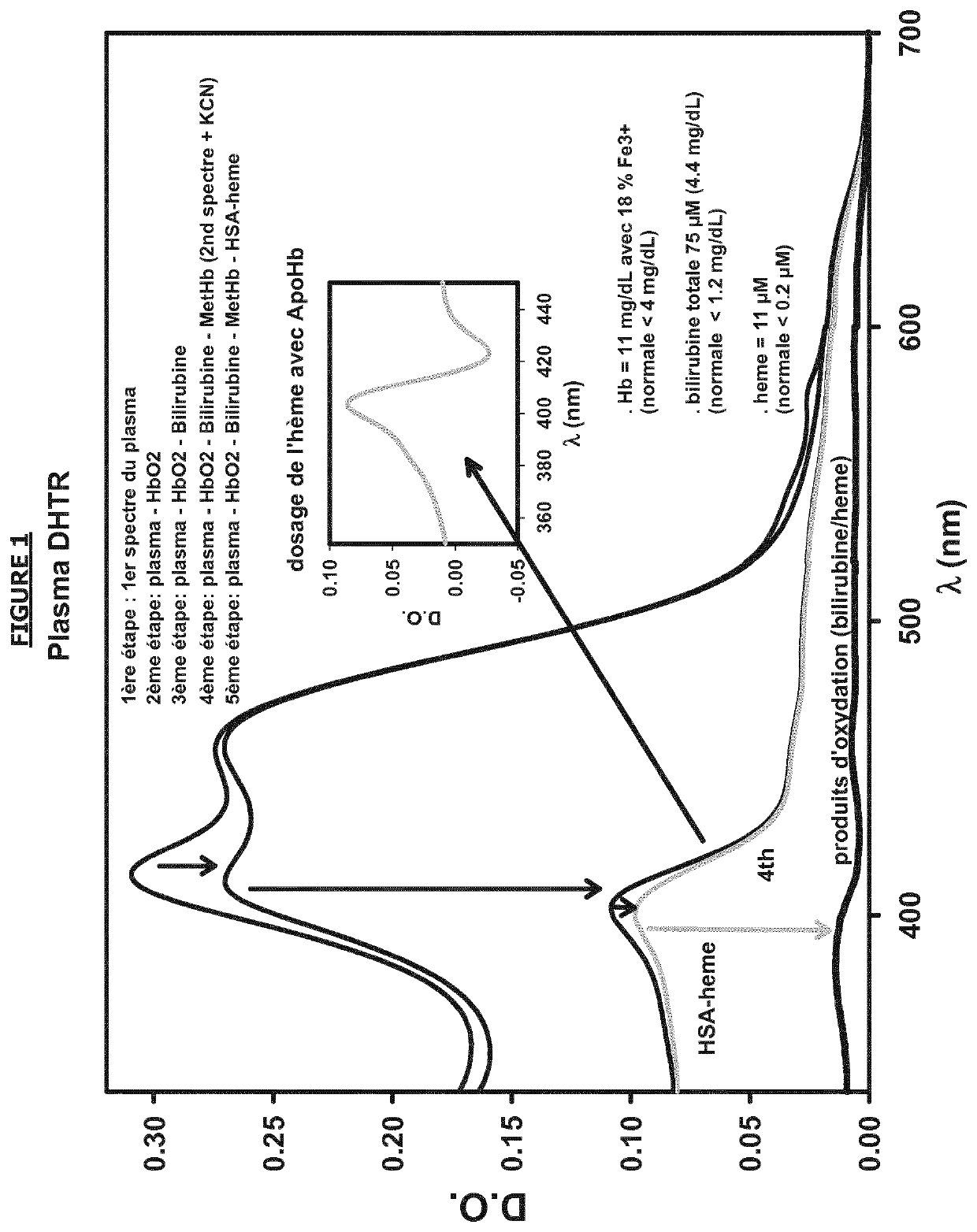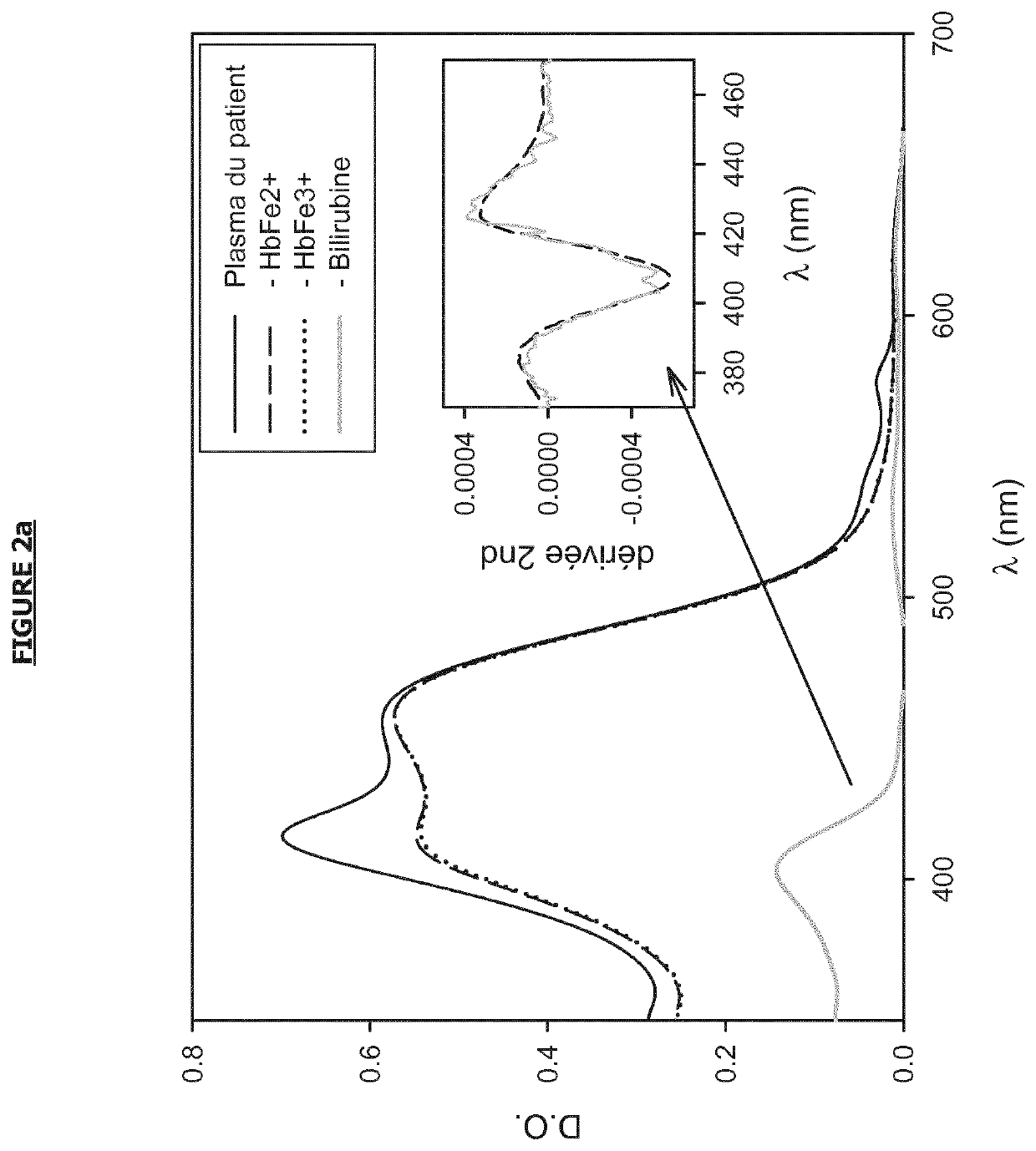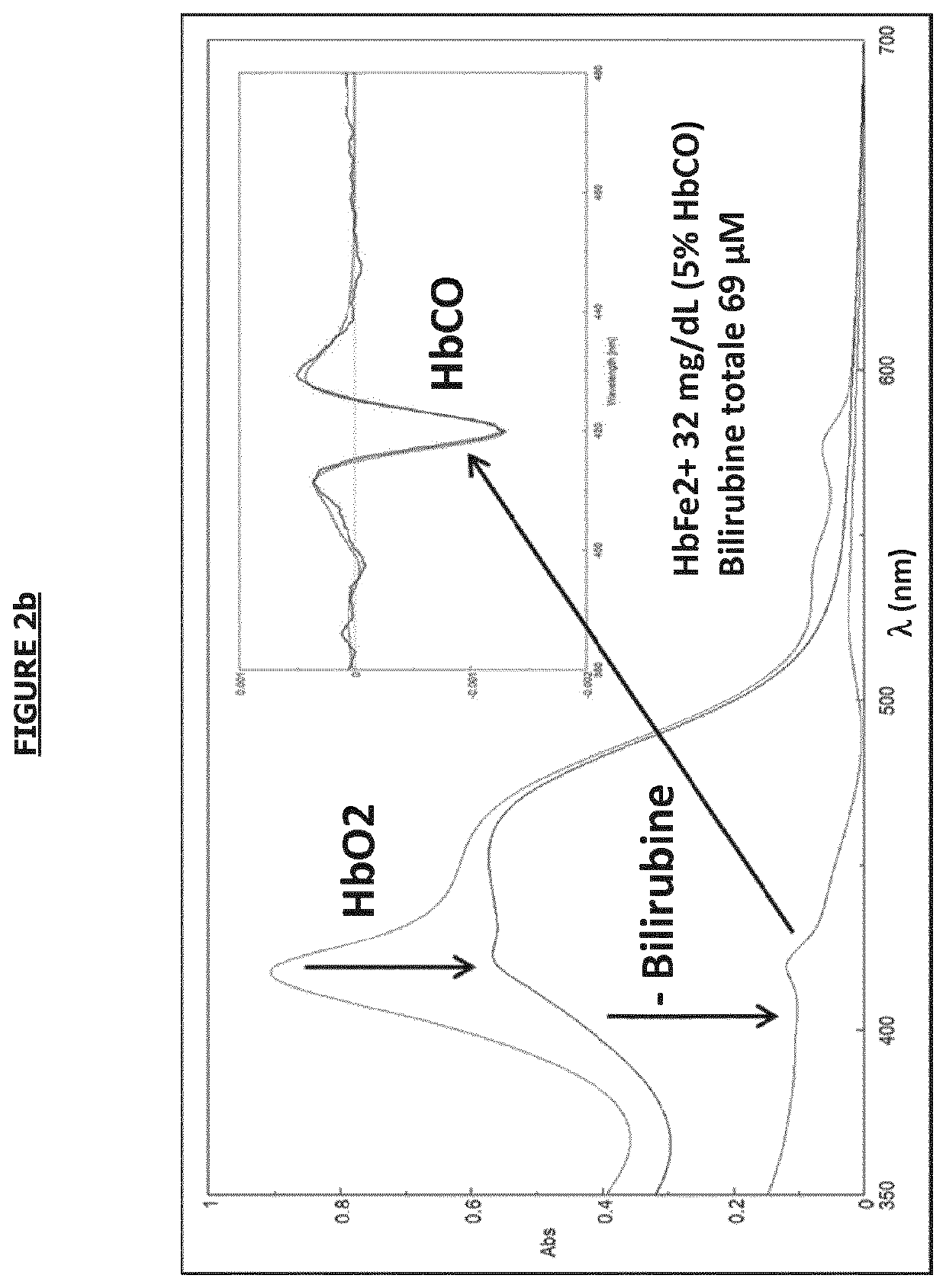Method for spectral study of a biological fluid
a biological fluid and spectral study technology, applied in biological testing, color/spectral properties measurement, material testing goods, etc., can solve the problems of participating in significant organ damage, exerting toxic effects, local vasoconstriction,
- Summary
- Abstract
- Description
- Claims
- Application Information
AI Technical Summary
Benefits of technology
Problems solved by technology
Method used
Image
Examples
example 1 (fig.1)
Example 1 (FIG. 1)
[0293]UV / visible absorption spectrum of a DHTR patient. The different species linked to the haem were measured by a mathematical approach based on experimental spectral measurements coupled to the spectra of the pure forms of each species considered.
[0294]Materials and methods: plasma diluted ⅙th (optical path 4 mm) in a PBS 50 mM potassium phosphate 50 mM NaCl pH 7.4. Addition of 0.2 mM KCN from a 50 mM stock solution. Or 2.5 μl in 600 μl total of diluted plasma (dilution factor 1.004).
[0295]first absorption spectrum: measured spectrum of plasma
[0296]second intermediate calculated spectrum: the HbO2 component was removed by subtraction of a completely oxygenated haemolysate spectrum in air (see FIG. 5a) based on the second derivative between 500 and 600 nm (typically, the peak at 577 nm presents an intense negative band for the second derivative). In fact, the narrow peaks in this absorption domain only come from the HbO2 spectrum while the other major spectral co...
example 2 (figs.2a , b , c , d)
Example 2 (FIGS. 2a, b, c, d): Assay on a Sample of Sickle Cell Patient with a Mechanical Heart Valve Problem
[0305]After subtraction of the different spectral components using the second derivatives for HbFe2+(O2), bilirubin-HSA and the determination of HbFe3+ after addition of KCN, the presence of plasma haem was revealed in purple here in a sickle cell patient with a mechanical heart valve problem (FIG. 2a).
[0306]Materials and methods: plasma diluted ⅙th (optical path 4 mm) in a PBS 50 mM potassium phosphate 50 mM NaCl pH 7.4. Addition of 0.2 mM KCN from a 50 mM stock solution. Or 2.5 μl in 600 μl total of diluted plasma (dilution factor 1.004).
[0307]Results: following the same methodology as in FIG. 1, the biomarker values for haemolysis are: plasma haemoglobin 13 μM (5% Fe3+), total bilirubin 130 μM, plasma haem 15 μM. Likewise, the absence of binding of the haem to haemopexin indicates a virtual depletion of this “scavenger” of the haem.
[0308]In the insert is shown the second d...
example 3 (figs.3a , b)
Example 3 (FIGS. 3a, b): Determination of Total Plasma Bilirubin
[0321]Materials and methods: plasma from a patient with low intravascular haemolysis (hereditary stomatocytosis with dehydration) diluted ⅙th (optical path 1 cm) in a 50 mM PBS 50 mM potassium phosphate NaCl pH 7.4. The low spectral contribution of plasma Hb was subtracted as described in FIG. 1. After dissolution of the lyophilized human HSA “fatty free” in this same buffer then addition of bilirubin (<HSA) as described in Example 1 (Sigma products) a reference haem-HSA spectrum is recorded and standardized.
[0322]Results: The plasma spectrum after subtraction of HbO2 is shown in FIG. 3a. It corresponds to the spectral form of bilirubin (unconjugated and more weakly conjugated) linked to HSA. This spectrum is similar to that obtained from the reference spectra of bilirubin bound to human HSA (commercial products). In fact the second derivatives are almost identical (FIG. 3b).
[0323]Conclusions: The preferable maximum at ...
PUM
 Login to View More
Login to View More Abstract
Description
Claims
Application Information
 Login to View More
Login to View More - R&D
- Intellectual Property
- Life Sciences
- Materials
- Tech Scout
- Unparalleled Data Quality
- Higher Quality Content
- 60% Fewer Hallucinations
Browse by: Latest US Patents, China's latest patents, Technical Efficacy Thesaurus, Application Domain, Technology Topic, Popular Technical Reports.
© 2025 PatSnap. All rights reserved.Legal|Privacy policy|Modern Slavery Act Transparency Statement|Sitemap|About US| Contact US: help@patsnap.com



